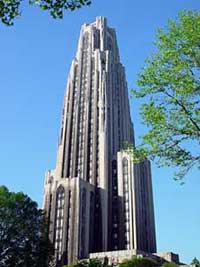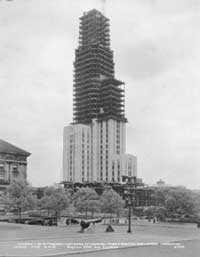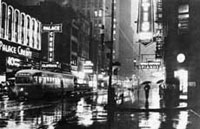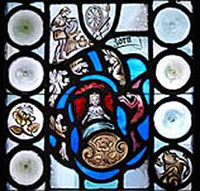 by Bob Ciminel December 14, 2004
On September 27, 1926, the University of Pittsburgh broke ground for a new 42-story gothic skyscraper called the Cathedral of Learning. Locals referred to the building as the Inverted Mine Shaft. Today, the Cathedral houses a unique collection of classrooms known as the Nationality Rooms. Many Pittsburghers don't know the classrooms exist, and I was part of that group until my wife began teaching at the Cathedral in the early Seventies. Pittsburgh was the center of the Industrial Revolution in the United States. Located east of the Allegheny Mountains, in the valleys formed by the Allegheny, Monongahela, and Ohio rivers, the city could easily ship its products to the west and south. However, the real key to Pittsburgh's future as a manufacturing giant was that the famous Pittsburgh coal seam, the greatest and most heavily exploited natural resource in the United States, surrounded the city. With an average thickness of 5 feet, the 6,000 square mile seam of bituminous coal underlying the hills around the city fueled the steel-making industry that turned Pittsburgh into the "Steel City." In 1927, the year that construction began on the Cathedral of Learning, the mines around Pittsburgh produced over 31 million tons of coal for shipment down the Monongahela and Ohio rivers. The coal burned in Pittsburgh's steel mills also gave it another name, the "Smoky City." As a child, I can remember when downtown Pittsburgh was as dark as night in the middle of the day. Coal and steel formed the foundation for Pittsburgh's growth, but the ethnicity of its work force gave the city its heart and soul. My grandparents emigrated from Italy in the early 1900s to work in the mines. Their sons went on to become steelworkers. The city and the surrounding towns hosted neighborhoods that were as ethnically diverse as anything we see today. Fortunately, the multicultural history of the city remains preserved within the walls of the Cathedral of Learning. At 535 feet, the Cathedral is the second-tallest educational building in the world. The first floor Commons Room is four stories high, with limestone walls imported from Indiana and a green slate floor quarried in Vermont. The 26 Nationality Rooms completed between 1938 and 2000 surround the Commons Room. Native artisans came to the city to work on the rooms using materials and techniques from their various countries. The majority of the work was performed by hand, which is evident in the details that went into each room. My wife taught in Room 119, the German classroom, which replicates a typical 16th Century classroom at the University of Heidelberg. A unique feature of the German classroom is the 24 stained glass windows depicting scenes from the Grimm Brothers fairy tales. Today, the Cathedral's misnomer as an inverted mineshaft is no longer applicable. Very little mining occurs in the immediate vicinity of Pittsburgh. Two world wars left little economically recoverable coal, and major production has shifted to the Pennsylvania - West Virginia border. Most of the major steel mills also closed and the land converted into building sites for newer technologies. The University of Pittsburgh's curriculum, once heavily weighted in engineering and hard science now focuses more on liberal arts and medicine. In 1893, the University graduated its first Africa-American when William Hunter Dammond received a degree in civil engineering. In 2002, the University received $425 million in grants for medical research. Clearly, there is no longer money to be made educating coal miners.
|
||



